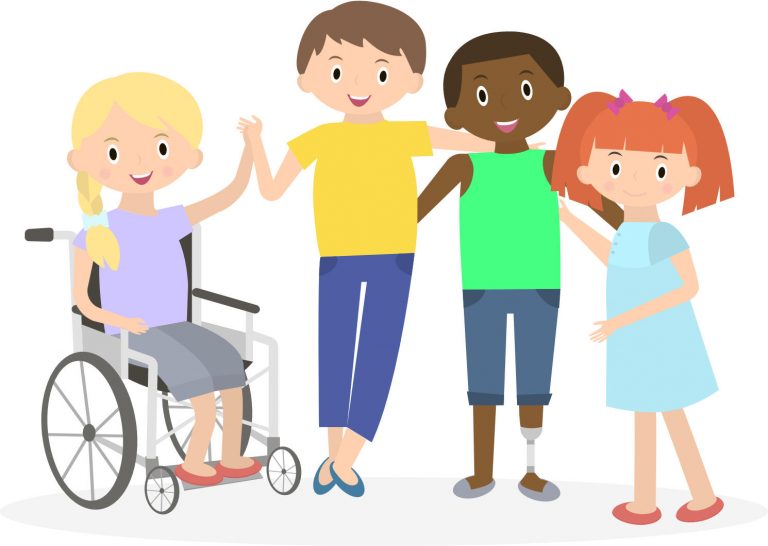
Transition from school to the real world can be tenacious, particularly for young men and women with disabilities.
By Nazarul Islam
Teachers and assistants associated with the Indian Prairie School District’s STEPS Program, have spent years cultivating their patience and optimism at one of the most demanding jobs in education: teaching children with special needs.
Transition from school to the real world can be tenacious, particularly for young men and women with disabilities. Du Page County Regional Office of Education, in partnership with local business organizations has continued to operate, in order to make that transition less hectic. In a relatively short span of time, it has inspired all those who have shared an ambitious goal of attaining self-sufficiency for the struggling students of our community.
In the nascent tears, this institution’s evolving Secondary Transition Experience Program (STEP), had aimed to boost students with disabilities through a comfortable transition from high school— to the rigors of working, and becoming self-sufficient, or lesser dependent members of our community.
Furthermore, this program has offered high school students the chance to learn job skills and interact with others looking for similar abilities, in any given job setting. It has also assisted students to prepare better, for the non-employment aspects of the real world—such as teaching students in wheelchairs, boarding a transport vehicle, or helping other struggling students with personal assistants, in their bid to learn how to perform well.
Obviously, intensive care programs demand the best of focus of many of our dedicated teachers. Some of them may have expressed concerns because such demands do push them to a level that cause anxieties. Even the best performing teachers may have felt more worried, worn out and, at times, a bit helpless as they continued to teach their students. As a Teaching Assistant myself, in one of the best STEPS Programs in Illinois, I do feel all this can become ever more cumbersome because special children under our care, need intensive one-on-one guidance— with many of them, using their approved devices for use in their purposes of communication.
Again, serving students with special needs is a huge challenge; with new pressures being added, on a continuous basis. I have seen this happening on many occasions, where the best efforts of teachers to meet accommodations and modifications through a computer, are nearly impossible. In the end, it could get harder to manage. Yet, our conscientious Principal Kim Maloney and her teachers continue to do their best to provide the care and attention, at its best.
While some teachers may have struggled with their commitments at work, the obstacles experienced by those who teach children and young adults with disabilities are a little alarming. It is not only because their students’ challenges make it more difficult for them to learn remotely. This is also due to the fact that our school districts are required under the federal law (Individuals with Disabilities Act) to provide specific services and meet particular goals within a certain time frame to any child deemed to be eligible for special education services. That can include not just academics, but related services such as occupational, physical and speech therapy.
It needs to be emphasized here that the STEP is an integral part of the Illinois Department of Human Services’ Division of Rehabilitation Services. Students who participate in the program are those with individualized education programs (IEP) or “Section 504” plans that address the student’s disability.
This program has ‘grown substantially’ over the last three years, and may now be serving around 500 students in the current year. This is a number that may have almost doubled what it was, only three years ago. In the state of Illinois, students with disabilities have begun participating in transition activities in school at 14 1/2 years old; transition is federally mandated by age 16.
It had long been felt that remedial ‘steps’ in the proper direction had become indispensable. Action was required to recognize the situation and establish a Program that catered to specific self-advocacy skills, along with self-determination skills. All this would enable the students to learn what their strengths are. We also have established a need to know how to accommodate for whatever their special needs are—something, that has kept on challenging the students.
Down the road, when it had come to community participation in the STEPS Program, it was not just high schools that did so. In a bid to promote life changing skills, many local businesses and organizations, also chipped in their part, to help the transition process.
Technically, details of the program are all laid out in a student’s Individualized Education Program, or I.E.P. According to the Department of Education seven million children ages 3 to 21, or 14 percent of all public-school students, receive such special education services.
It is worthwhile to acknowledge that the parents of students also ‘have a right to sue their school district’ if their children fail to make progress. Hence our teachers have shared a burden of accountability. And that means teachers and administrators are not just worried about helping their students learn under exceptional circumstances, but also meeting legal mandates.
In any class of special education at the STEPS, offered under the auspices of Indian Prairie School District 204, that is imparting learning and essential skills—is really hands-on. Our regular Class teacher Ms. G teaches 16 students 18 to 22 years old in an adult transition class in Naperville, IL. The academic goals in the I.E.P.s, can be done over the computer. However, teachers are unable to meet their vocational goals, which are to be on job sites and learn skills.
Going back two years, to the days before Coronavirus had struck, some days her students rode public transportation or walked to their job placements at local stores; other days they might have gone to a nearby mall to test their knowledge about such things as making change and how to find a certain item.
For students in this variety of program, there’s a community component. Unfortunately, the same community has now moved away. One teacher confided that the last week before the school shut down in mid-March (2021) she spent all her time feverishly teaching the young adults how to use their new iPads, which the students took home the day before school closed, to start their remote learning classes.
And the technology challenges alone have been mind-boggling. “I don’t think anyone’s to blame now,” she said. “This last week of school everyone was scrambling, and it was too little, too late.”
But as the weeks moved on, she had seen improvement. “At one time I had 10 of my students in Google Classroom, and that was a crowning achievement,” she said. “But I won’t give up until I have all of them.”
As things seem to change almost daily at work, special education teachers are leaning on each other to find resources, understand software and boost morale. And that’s true not only in their own schools or districts, but also across the country. Currently, the Council for Exceptional Children, a resource and advocacy organization for those involved in educating children with special needs, has waived its annual membership fee.
Teachers today, are worrying not only about keeping their students’ academics up to speed, but also about how they will cope with being suddenly torn from their teachers, friends and programs.
Some parents who are essential workers were perhaps unable to be home with their children to assist or supervise their learning. Others have lost jobs or are balancing several children who are all learning at different levels. This struggle has continued for long, at many homes. These issues have continued to persist in the country’s social fabric.
Beyond doubt, the STEP is a landmark program that can be most beneficial to our workforce programs in Illinois. Similar programs have achieved great recognition and respect of community, all over United States.
Employers participating in the Career STEP Employment Program have an opportunity to build their workforce. By accepting a Careers STEP intern, employers have received:
320 hours (8 weeks) of work at no cost to participating business or employer.
The participant will get paid what employers would pay them up to $12 per hour
The intern is not on the payroll. A staffing agency pays intern directly.
The program pays Workers’ Compensation for the duration of the program
The program can pay for work-related items (with some restrictions)
The program is designed to allow the participant the chance to show you their skills while you can assess if the participant is a good fit for your company.
Finally, I must share this with all my hard working colleagues in the STEPS Program. Each STEP we take reveals a new horizon. You have taken the first step today. Now, I challenge you to take another.
_______________________
 The Bengal-born writer Nazarul Islam is a senior educationist based in USA. He writes for Sindh Courier and the newspapers of Bangladesh, India and America. He is author of a recently published book ‘Chasing Hope’ – a compilation of his articles.
The Bengal-born writer Nazarul Islam is a senior educationist based in USA. He writes for Sindh Courier and the newspapers of Bangladesh, India and America. He is author of a recently published book ‘Chasing Hope’ – a compilation of his articles.